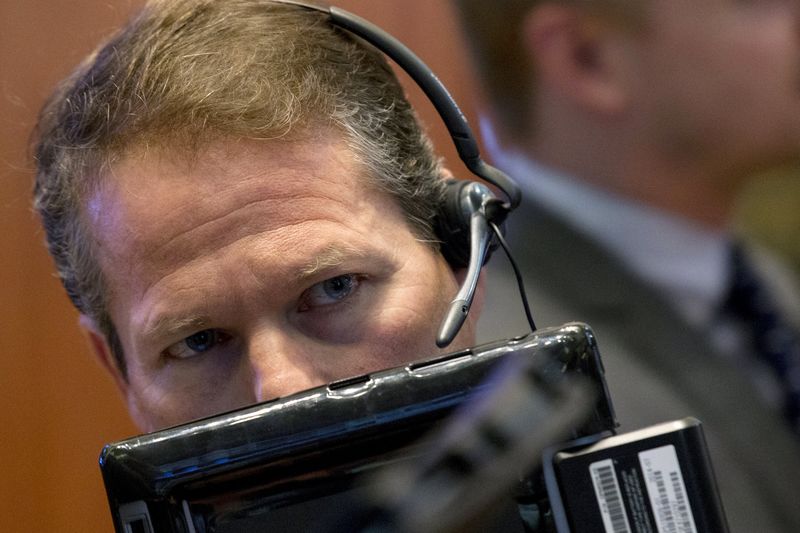Fubotv earnings beat by $0.10, revenue topped estimates
* Hopes of central bank stimulus lift global shares
* ECB says stands ready to take targeted measures
* G7 conference call planned later on Tuesday
* Australia central bank cuts policy interest rate
* Graphic: World FX rates in 2020 http://tmsnrt.rs/2egbfVh
By Marc Jones and Karin Strohecker
LONDON, March 3 (Reuters) - A recovery in world stock
markets and oil prices picked up pace on Tuesday, as global
policymakers signalled a united front to address the economic
fallout from the spreading coronavirus.
Europe's main bourses surged nearly 3% in what looked set to
be the region's .STOXX best day since 2016 .FTSE .GDAXI
.FCHI .FTMIB as dealers rediscovered their appetite for risk
and jettisoned safe but low profit assets. .MIWD00000PUS .
The reason? The cavalry. Finance ministers from the G7 and
central bank governors will hold a conference call on Tuesday
(1200 GMT) to discuss measures to deal with the outbreak.
According to a source at the group, a statement it is
crafting does not detail any firm fiscal or monetary stimulus
plans, but for investors it was a reassuring signal.
"The market is very much wanting a coordinated policy
response, but the question here is whether a conventional
interest-rate response is sufficient, or whether it requires
also a fiscal response," said Sameer Goel at Deutsche Bank.
"The problem is, the severity of the problem is not very
clear."
The mild selloff in super-safe government bonds came after
yields on benchmark U.S. Treasuries hit record lows in recent
days as worries mounted about a potential global recession.
The decision to hold a G7 call came after the head of the
European Central Bank, Christine Lagarde, on Monday joined the
chorus of heavyweight central bank chiefs signalling a readiness
to deal with the threat from the outbreak. Earlier messages from the U.S. Federal Reserve that it was
prepared to act continued to weigh on the dollar, having fuelled
expectations of a sizable rate cut at its meeting in two weeks.
Against the yen, the dollar lost 0.4% to 107.95 yen JPY= ,
slipping towards a five-month low of 107 set on Monday.
Lagarde's comments meant the euro was a shade lower at
$1.1111 EUR= , having hit an eight-week peak of $1.1185 in the
previous session after a string of other top ECB policymakers
said the bank was still assessing the situation.
The Australian dollar AUD=D3 , which is seen as a proxy bet
on China due to the raw materials it sells there, sat above a
recent 11-year trough largely on short covering after its
central bank cut interest rates earlier in the day. Oil prices gained another 2% after a jump of more than 4% on
Monday. U.S. West Texas Intermediate crude futures CLc1 went
to $47.8 a barrel while Brent crude LCOc1 stood at $52.9.
The improved sentiment helped U.S. S&P 500 futures ESc1
climb as much as 1%. MSCI's world stocks index was up 0.6%
having scored its best day since 2011 on Monday after a roaring
Wall Street pushed it up just over 3%. .MIWD00000PUS
Asia-Pacific shares outside Japan .MIAPJ0000PUS ended 0.8%
higher, off earlier peaks but still marking the second straight
session of rises.
"Barring any further deterioration of the coronavirus
outbreak, we believe that the global cyclical recovery is likely
to gain further momentum," Schroders' Asian multi-asset team
said in a report.
"This is likely to benefit stocks with higher leverage to
global growth, as stronger earnings could support dividend
growth."
MONEY MARKETS
Japan's Nikkei .N225 lost steam and closed 1.2% lower
after short-covering ran its course and as the yen firmed on the
dollar, but South Korea's Kospi .KS11 rose 0.6%.
Australian shares .AXJO ended up 0.7% after the central
bank cut interest rates to a record low of 0.5%, the fourth
reduction in less than a year. The rout in global stocks last week had already prompted Fed
Chair Jerome Powell and Bank of Japan Governor Haruhiko Kuroda
to flag a readiness to move.
"It is reasonable to expect a response that reflects a
combination of fiscal measures and central bank initiatives,"
Bank of England Governor Mark Carney said on Tuesday.
Money markets are fully pricing in a cut of at least 0.25
percentage points to the current 1.50%-1.75% target rate at the
Fed's March 17-18 meeting as well as a 0.10 percentage point cut
to the ECB's minus 0.5% key rate at March 12 meeting.
The frantic moves by policymakers reflected growing fears
about the disruption to supply chains, factory output and global
travel caused by the new epidemic just as the world economy was
trying to recover from the effects of the U.S.-China trade war.
Coronavirus, which has already claimed more than 3,000
lives, now appears to be spreading much more rapidly outside
China than within the country. That leads the world into
uncharted territory, although the World Health Organization has
so far stopped short of calling it a pandemic. U.S. bond yields rolled back some of their sharp falls.
The 10-year U.S. Treasuries yield moved to 1.15% US10YT=RR
from a record low of 1.030% marked on Monday. The two-year notes
yield US2YT=RR jumped back to 0.87% from a 3 1/2-year low of
0.710%, though yields on the most rate-sensitive short term
notes continued to drop.
April Fed funds rate futures FFJ0 still price in about 80%
chance of a 0.50 percentage point cut this month and a total of
almost 1 percentage point cuts by the end of year.
